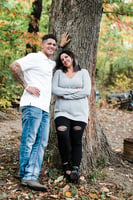Like many aspects of parenting, teaching kids to brush and floss requires a savvy balance between supervision and independence. Here are some guidelines for brushing and flossing at every age and stage.
Babies
Preventive care begins even before babies have teeth. Those 20 adorable baby teeth do fall out, but baby teeth need to remain healthy and cavity-free as long as possible to allow for proper nutrition and speech development.
- After feedings, rub gums with a wet facecloth even before teething starts. This will help your baby get used to having his or her mouth cleaned.
- Once teething begins, use a very soft-bristled toothbrush with water and massage the tooth and gums.
Toddlers
When children have several teeth, brushing becomes even more important.
- Supervise brushing in the morning and at night, or brush for them, with non-fluoridated toothpaste. Switch to a fluoride toothpaste as soon as your kids can spit.
- Let an electric toothbrush do the work for them. Electric brushes remove much more plaque than a regular toothbrush. Find one that is rechargeable and geared towards kids.
- Start flossing once teeth make contact with their neighbors. Floss picks make flossing quick and easy.
- Serve apple slices and baby carrots, which act as sneaky natural brushes to remove snacks that get stuck in “groovy” molars.
- Limit sugar as much as possible. Sugar is added to just about every pre-packaged food, so read those nutritional labels!
Kids age 5+
Now’s the time to encourage kids to take more responsibility for their own brushing and flossing.
- Take turns brushing. Let your child brush in the morning, and then take over brushing duties at night.
- Brush with an electric toothbrush using toothpaste with fluoride and continue to floss. Flossing isn’t always easy – especially for kids with braces - but it prevents decay and the formation of white spots caused by plaque.
- Teach kids how to read nutritional labels and count the grams of sugar in their snacks to empower them to make healthier choices.
Got a Squirrelly One?
Settling down to brush is harder for some kids than others. Here are a few simple tricks for fewer tears.
Just like taking baths or doing homework, brushing teeth can be a chore for kids. But encouraging kids to develop solid tooth-brushing skills at an early age sets them up for good dental habits that will last a lifetime.- Let your child pick out their favorite toothbrush and toothpaste (as long as it’s age appropriate).
- Instead of using a timer for brushing, have your child pick out a favorite song and have them brush until it’s over.
- Brush earlier in the evening when snacks are finished instead of right before bed. Children are more awake and tend to do a better job.
- Use sticker or reward charts – perfect for younger kids learning to brush on their own.
As a new parent, or even a seasoned one, finding a great pediatric dentist can be hard! Do you have a great pediatric dentist in the Robinson area our readers should know about? Share the deets with us here or email emilyp@macaronikid.com.



